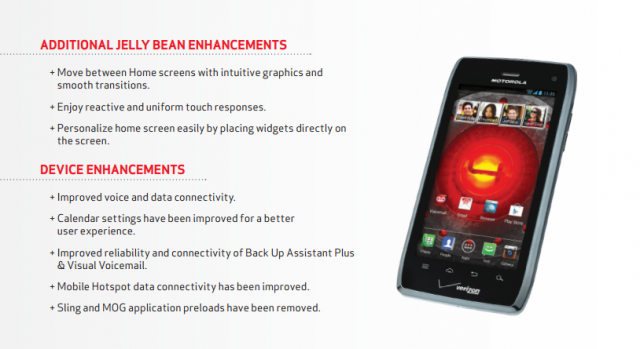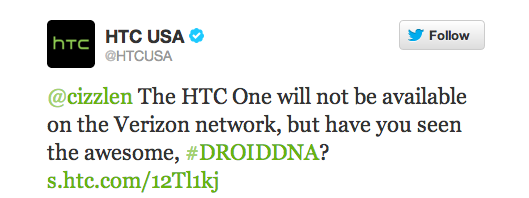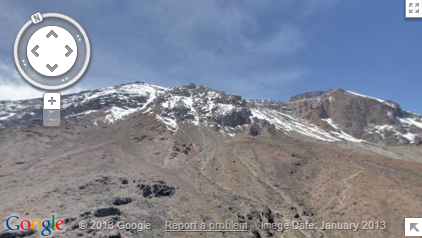Android Authority |
- Acer, HP and Samsung Chromebooks now rolling out in six new countries across the world
- Deal alert: Sprint’s Samsung Galaxy S3 goes for $49.99 via RadioShack
- 5.9-inch Galaxy Note 3 reportedly being demoed to AT&T execs this week
- Nexus 7 2 to pack Qualcomm processor not NVIDIA Tegra 4, new report says
- Google Keep outed: Meet Google’s new note-taking service
- Samsung Galaxy Young Duos goes on sale in Germany for €153
- How to use HDR on your Android device
- Amazon AppStore celebrates its second birthday with an app sale
- Motorola ‘Yeti,’ ‘Sasquatch’ and ‘Ghost’ leaked; is the first Google X Phone among them?
- Gmail update lets you reply, archive and delete right from notifications
| Acer, HP and Samsung Chromebooks now rolling out in six new countries across the world Posted: 19 Mar 2013 02:26 AM PDT
Only available on American and British soil until a couple of days ago, Google's Chromebooks are now one step closer to becoming the global devices they deserve to be. The Pixel has hit the ground running in Australia, while Acer, HP and Samsung's Chromebooks are themselves ready to start selling down under, as well as in Canada, France, Germany, Ireland and the Netherlands. "Select" JB Hi-Fi and Harvey Norman stores in Australia already have the Samsung Series 3 and Acer C7 in stock. The former goes for $349, while the latter is $299, which is basically a hundred bucks extra than what US retailers charge for the two. As for HP's Pavilion 14, that's on its way down under, but we don't have an exact release date or price tag yet. Canada's Best Buy and Future Shop have all three Chromebooks up for grabs online, with stock due out in physical stores as well in the next days. Acer's C7 starts at $249.99, Samsung's Series 3 is $269.99, while the HP Pavilion is $329.99.
In France, there's only one Chromebook ready to start selling – Samsung's Series 3. The 11.6-incher will be available via several retailers, including Amazon, for a recommended price of EUR 299 ($387). Germany is to get both Samsung and Acer's laptops, with the former going for €299 and the latter worth €279. The same duo will hit the Netherlands, but, while the Samsung will be available for the same price, the Acer will be €10 cheaper. Finally, PC World and Amazon are the two Irish retailers chosen by Google as partners. The HP Pavilion 14 is not slated for a release there yet, but the Acer C7 and Samsung Series 3 will be pretty affordable – €249 and €279 respectively. But wait, there’s more. Because Google is also expanding availability across America, with Chromebooks set to hit 1,000 new Best Buy locations over the next couple of weeks. That’s actually going to double the number of stores these laptops will sell in, meaning the Chrome OS-based machines are on their way to becoming mainstream hits. But hey, it was about time, wasn’t it? The post Acer, HP and Samsung Chromebooks now rolling out in six new countries across the world appeared first on Android Authority. |
| Deal alert: Sprint’s Samsung Galaxy S3 goes for $49.99 via RadioShack Posted: 19 Mar 2013 02:18 AM PDT
With the Samsung Galaxy S4 finally being unveiled last week, you'd think that carriers will start giving away its predecessor for free. Maybe we'll have to wait until the S4 actually hits store shelves for that to happen. But if you're looking to grab the Galaxy S3 now, check out the special deal that RadioShack is offering for the former flagship phone. New Sprint customers can purchase the GS3 from the retailer's website for $49.99. It goes without saying that it comes with the standard two-year contract. Meanwhile, those who are looking to upgrade will have to shell out $99.99. In case you need some more convincing, the Galaxy S3 is expected to get some of the new software features that the younger and thinner brother is sporting. We also learned yesterday that the handset is likely to receive the Android 5.0 Key Lime Pie upgrade, which has been rumored to come in May. Still undecided? Check out our guide on whether or not the Galaxy S3 is still worth your hard-earned money. The post Deal alert: Sprint's Samsung Galaxy S3 goes for $49.99 via RadioShack appeared first on Android Authority. |
| 5.9-inch Galaxy Note 3 reportedly being demoed to AT&T execs this week Posted: 19 Mar 2013 01:41 AM PDT
The recently unveiled Samsung Galaxy Pad gaming accessory, for the Galaxy S4 and up to 6.3-inch touchscreen devices, prompted plenty of speculation that the Galaxy Note 3 will come with a 6.3-inch display, just as some reports suggested in the past. But now we hear that a 5.9-inch Galaxy Note 3 will be demoed to AT&T execs later this week. That 5.9-inch size is not new either, as recent reports have said that Samsung is working on mobile devices with 5.9 inch displays. A new Korea Times article says that AT&T and Samsung execs will meet in Seoul, South Korea, this week to discuss the launch and AT&T promotion of the upcoming smartphone. Apparently AT&T will get to look at a Galaxy Note 3 mockup during the meetings. The device is said to sport a 5.9-inch OLED display with Full HD resolution, Exynos 5 Octa processor, LTE and various features, "though discussions are still under way regarding what they should be." All these details are coming from an executive at a "Samsung's main parts supplier," but as always, he wasn't identified. As for the 6.3-inch Samsung Android device, the publication notes that it will be a separate product, but not a flagship device like the Galaxy Note 3:
Are you looking forward to a 5.9-inch Galaxy Note 3? Or are you sticking with smaller smartphones this year? The post 5.9-inch Galaxy Note 3 reportedly being demoed to AT&T execs this week appeared first on Android Authority. |
| Nexus 7 2 to pack Qualcomm processor not NVIDIA Tegra 4, new report says Posted: 19 Mar 2013 01:16 AM PDT
The second-generation 7-inch Nexus tablet – which could have a strange name like Nexus 7 2 – is again rumored to pack a Qualcomm processor instead of a NVIDIA Tegra 4/4i SoC. The current Nexus 7 model comes with NVIDIA's Tegra 3 under the hood, so the natural assumption would be that future Nexus 7 models will continue to use future generations of NVIDIA processors. A new DigiTimes report on Monday said that Asus and Google have chosen a Qualcomm Snapdragon processor instead a Tegra 4, likely because the former chip also come with 4G LTE support. While Tegra 4i chip versions do have integrated LTE capabilities, they're launching too late to catch up with Nexus 7 2 production needs. The new 7-inch Nexus tablet is reported to be unveiled in May, most likely at this year's Google I/O edition. By not being the chosen SoC maker, NVIDIA is said to lose "almost eight million processor shipments in 2013," according to sources familiar with the matter. Comparatively, the company reportedly shipped 6 million Tegra 3 chips to Google for the first Nexus 7. Are you looking forward to buy the new Nexus 7 tablet? The post Nexus 7 2 to pack Qualcomm processor not NVIDIA Tegra 4, new report says appeared first on Android Authority. |
| Google Keep outed: Meet Google’s new note-taking service Posted: 19 Mar 2013 01:04 AM PDT
As mobile devices get smarter, we rely on them more to do the complicated tasks of remembering things for us, a segment that Evernote and its cross-platform note-taking app has seemingly cornered since 2008. And a splendid job it's been doing thus far. While Google had a dabble in similar territory before to no success (remember Google Notebook?), it appears that the tech giant is on the cusp of introducing a new note-taking service, dubbed as Google Keep, to challenge Evernote and its 50 million strong users. Although it's not yet official, the service went live for a short while earlier in the week, allowing Android Police to grab some screenshots and share them with the rest of the world. The interface kinds of remind us of the cards-based Google Now. Google Keep will allow users to create, save and share notes, task lists, pictures, and other content. As you might've guessed, the service will be integrated with Google's other offerings, such as Drive, which is a good thing if you're rather dependent on all things Google. You should be able to save web links and snippets as well through the "Add to Google Keep" button. Alas, the website has since been taken down and you'll see a 404 error message instead. Seeing how Google likes to take its time in introducing a new product, we can't tell for sure whether Google Keep will arrive next month or next year, but we think it'll be heading our way sooner rather than later. Perhaps, it’d be introduced alongside Google Babble? We’ll keep you updated. The post Google Keep outed: Meet Google’s new note-taking service appeared first on Android Authority. |
| Samsung Galaxy Young Duos goes on sale in Germany for €153 Posted: 18 Mar 2013 10:58 PM PDT
We first heard about the Galaxy Young, Samsung's latest entry-level smartphone, in December of last year. It wasn't until last month that the Korean made the phone – both the dual SIM and single SIM variants – official, though no pricing and availability details were given at the time. If you've been waiting for the Galaxy Young Duos to land in Europe, you'll be thrilled to hear that you can now grab the dual SIM phone from Amazon Germany. The online retailer is selling the Young Duos for €153. Only the white model is in stock and if you order now, you’ll have it delivered to your doorstep for free within 24 hours. The petite Galaxy Young Duos only packs a 3.27-inch HVGA display and is powered by a single-core 1GHz processor. The rest of the specs include 768MB of RAM, 4GB internal storage with microSD support (up to 64GB), a 3-megapixel rear camera, a 1,300mAh battery, WiFi b/g/n, Bluetooth 3.0, HSDPA, and Android 4.1 Jelly Bean. For €50 more, you can snag the Samsung Galaxy Fame instead, which comes with a larger 3.5-inch screen of the same 320 x 480 resolution, though it only has 512MB of RAM. Unlike the Young, the Fame also offers a VGA front-facing camera for those all-important selfies. Interested in any of the above? The post Samsung Galaxy Young Duos goes on sale in Germany for €153 appeared first on Android Authority. |
| How to use HDR on your Android device Posted: 18 Mar 2013 07:00 PM PDT
Of the many ordinary and extraordinary things that I can do on my Android device, mobile photography is one of my well-loved activities. Taking panoramic images is a walk in the park on my Android phone. I can even create 360-degree photos of my surroundings with the Photo Sphere mode of the Android 4.2 Camera. Yet, there’s a very nifty camera mode that’s not much talked about — High Dynamic Range mode, better known as HDR. Used appropriately, HDR Mode can produce really awesome photos. On the Web I have seen stunning HDR images that were taken using a DSLR camera and merged through an HDR photo editing tool. Can the HDR feature on Android devices provide the same or comparable quality? What is HDR anyway? And, how does it work? How can you effectively use HDR? In this guide, you’ll learn how to use HDR on your Android device. You may also watch the video tutorial towards the end of this post. What is HDR?
HDR stands for High Dynamic Range. It usually refers to the method of capturing images having “greater dynamic range between the lightest and darkest areas of an image than current standard digital imaging methods or photographic methods” (Wikipedia). HDR images are frequently described as saturated, high in contrast, and rich in colors. Looking at an HDR image might make you think that it’s a complicated and time-consuming image to create. But, the truth is that creating HDR images is quite simple. The process involves capturing multiple shots of the same subject but in varying exposures (underexposed, normally exposed, and overexposed). The multiple images are then combined into one photo, resulting in a greatly detailed image. Some photographers use HDR software to merge and edit the images, oftentimes resulting in surreal images.
HDR Mode on Android also follows the same principles but is simpler compared to how it is usually achieved on a DSLR camera. HDR on Android handsets usually correct exposure imbalances and enhance details on both the subject’s background and foreground. To better understand how HDR works, let me show you some sample images taken by the Galaxy Camera. The photo below was taken without HDR:
And, this one’s a photo with HDR enabled. Do you see some difference?
The tree in the first picture is underexposed because of the bright background (i.e., the bright sky). HDR tries to correct this imbalance by equalizing the exposure on both background and foreground so details are enhanced in both areas. This is basically how HDR works. Do you have HDR?Not all Android devices support HDR Mode. The best way to check for HDR capability is by looking for the HDR option in your device’s Camera app.
The HDR option on some high-end Samsung devices can be found under the Shooting Mode menu.
Some custom Camera apps (e.g., on the HTC One X and Desire X) place the HDR option under the Camera Scenes section.
If you can’t find HDR under Shooting Mode or Camera Scenes, try looking for it under the camera’s Settings menu. Some Sony devices (e.g., the Xperia T and Xperia V), for example, place HDR under the camera’s Settings menu.
On the Nexus 4, which runs Android 4.2 Jelly Bean, you can easily turn HDR Mode on by long-tapping the viewfinder and tapping the HDR icon. Interestingly, the Android 4.2 Camera on the other Nexuses (i.e., Galaxy Nexus and Nexus 10) doesn’t have HDR Mode.
On other Android devices, HDR may be found under certain labels such as Backlight HDR or Backlight Correction HDR. On the Galaxy Camera, HDR is not labeled as such; instead, Samsung calls it Rich Tone and it can be found under the Smart Modes menu. Using HDR on your Android device
Using HDR on your Android device is easy. All you need to do is enable HDR Mode and snap photos as you normally would: launch camera app, point and focus at subject, and hit camera shutter. Also, you might want to use a tripod if it’s available, or at least hold the camera with stable hands; HDR doesn’t take too kindly to movement when capturing photos. Also, the camera shutter speed may vary depending on the amount of light. If you use a Samsung Android device, you will notice that the camera will produce two pictures. One is the HDR image and the other is the one with normal exposure. Check the file name to distinguish the two images. HDR images have “HDR” in their file names. When to use HDRHDR is a handy feature on your Android camera. But, when is the proper time to use HDR? Here are some situations where HDR may be advantageous:
When not to use HDRHDR may be advantageous in several situations, but there are times when you don’t want to use HDR. Here are some of those instances:
Using an HDR camera app
If your Android device doesn’t have HDR, don’t fret. You can still enjoy HDR photography with the help of Android apps. There are several HDR-capable camera apps on the Google Play Store. A personal favorite of mine is HDR Camera+, a paid app that allows you to take HDR photos and instantly edit your photos after capturing them. Or, if you just want the HDR feature without the ability to edit your photos, there’s the plain ol’ HDR Camera app, which is free. Here’s a quick guide to capturing your first HDR image using HDR Camera+:
Video GuideKnow more about how to use HDR on your Android device by watching our video tutorial on YouTube: ConclusionHDR is one of the many features on an Android camera that make mobile photography interesting and fun. It certainly makes photos look better because of the wider range of light and dark intensities. And, although not all Android devices have HDR out of the box, you can always try installing an HDR camera app. Do you use HDR on your Android device? How often do you use it? Do you find it useful? What tips and tricks can you share to us regarding HDR use on Android? Let us know in the comments. (with contributions from Elmer Montejo) The post How to use HDR on your Android device appeared first on Android Authority. |
| Amazon AppStore celebrates its second birthday with an app sale Posted: 18 Mar 2013 02:57 PM PDT
At least in the United States, Amazon’s AppStore is pretty much the most popular alternative to Google Play, in large part thanks to the Kindle Fire. The Amazon AppStore is turning two years old and in celebration is offering a week long sale on various games and a small selection of other types of apps. The discounts start at 50% off the regular price, and some are even higher than that, actually.
There are many different games on sale including Modern Combat 4: Zero Hour, Need for Speed Most Wanted, Cut the Rope Experiments and more. Some of the applications on sale include Splashtop Whiteboard and OfficeSuite Professional 7. In total there are 24 apps listed, including the games and it is worth noting that many of these apps are "Kindle Tablet Editions". So how long do you have to get on these birthday deals? The sale ends on March 23, so that gives you a few days to decide whether any of the apps worth purchasing or not. For those interested, here’s the full list of apps available in the promotion:
What do you think, any of these worth grabbing or not? The post Amazon AppStore celebrates its second birthday with an app sale appeared first on Android Authority. |
| Motorola ‘Yeti,’ ‘Sasquatch’ and ‘Ghost’ leaked; is the first Google X Phone among them? Posted: 18 Mar 2013 02:52 PM PDT
Whether it's the Nexus 5 or the X Phone, we have plenty of rumors for those devices these days, and it's now time to look at some new codenames that seem to describe new Motorola handsets, the "Yeti" and "Sasquatch," both reportedly coming to AT&T, and the "Ghost" that’s heading to all carriers. So what kind of devices are they? Are they new RAZR models? Do they include a new Nexus version? Or ar they Google X Phones? A few days ago we showed you not one, but two reports that claimed that the X Phone will become an entire smartphone family, meant to take on the Galaxy line, but also everyone else in the process. One of those reports said that the Motorola handset we spotted in Vietnam just before the Galaxy S4 launch, the XT912A, is apparently a first X Phone prototype. And what do you know, the Motorola Ghost seems to be that XT912A model, according to a GLBenchmark test for the AT&T Ghost version. The Ghost will reportedly offer a 1.7GHz quad-core Qualcomm Snapdragon S4 Pro processor with 720p HD display, on-screen navigation buttons, and Android 4.2.1. As for the Yeti and Sasquatch, there aren't that many details about them at this time. The former apparently comes with Android 4.2 Jelly Bean on board while the latter is apparently running Android 4.2.2, with both of them heading to AT&T only. Mind you, we're speculating on rumors for now and there's no way to confirm any of these devices at this time. Therefore we can't really be sure what we're looking at here. They could be new RAZR models, but just as well they could be the first X Phones (not necessarily high-end ones). But while we can't confirm this either, it wouldn't make sense for any of these devices to be a Nexus 5 considering all the X Phone rumors out there. After all, Google can't afford to hit its Android partners with two competing products, both made by Motorola, both running the latest Android version at launch and both rather affordable, a Nexus 5 and an X Phone. We'll be back with more details about the Ghost, Yeti and Sasquatch once we have it, meanwhile we're going to note that all these Google leaks can't be that coincidental, can they? The post Motorola 'Yeti,' 'Sasquatch' and 'Ghost' leaked; is the first Google X Phone among them? appeared first on Android Authority. |
| Gmail update lets you reply, archive and delete right from notifications Posted: 18 Mar 2013 02:08 PM PDT
Google’s Gmail client for Android has now rolled out an update bringing with it several new improvements, including the ability to reply, archive or delete a message directly from the notification shade in Android 4.1 or higher. While the new Gmail notification features are probably the most significant change, that’s far from the only change. For those with Android 4.0 or higher, the new Gmail update also offers faster search, and according to Google that even applies to when you are using it offline. There are also some bug fixes for those with ICS and higher. If you are stuck with Android 2.2, you aren’t completely left out. The new update also affects Android 2.2 (and later) users with a new labels API for 3rd party app developers, and some unspecified performance improvements as well. It’s really not surprising to see that Jelly Bean saw most of the love here with the latest update, though its nice to see those of us with older versions of Android still getting support as well. What do you think of Google’s new notification shade feature for Gmail, like the idea that you won’t have to enter into the app nearly as often? The post Gmail update lets you reply, archive and delete right from notifications appeared first on Android Authority. |
| You are subscribed to email updates from Android Authority To stop receiving these emails, you may unsubscribe now. | Email delivery powered by Google |
| Google Inc., 20 West Kinzie, Chicago IL USA 60610 | |




![galaxy note 2 marble white titanium grey [aa]](http://cdn01.androidauthority.net/wp-content/uploads/2012/10/galaxy-note-2-marble-white-titanium-grey.jpg)







































